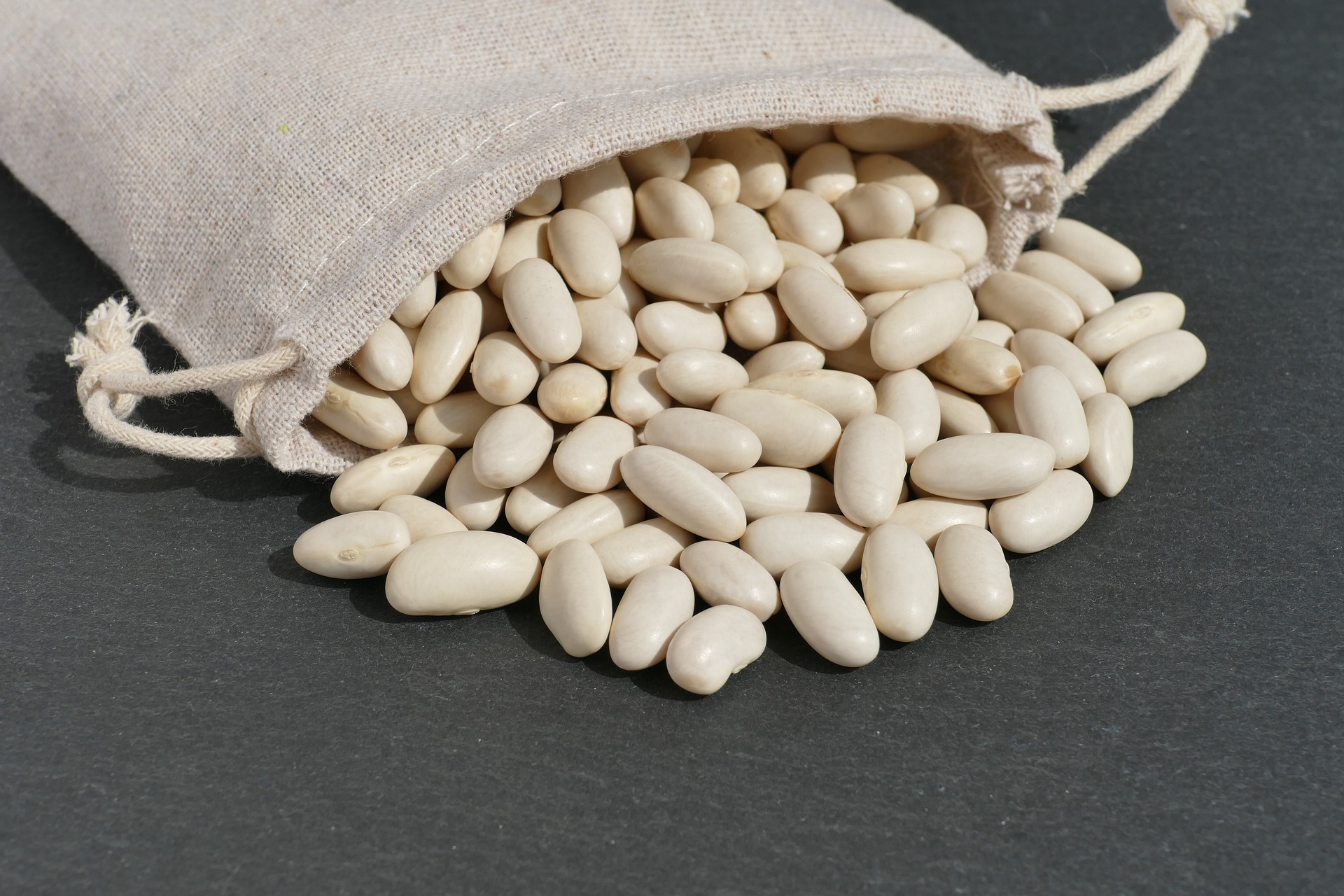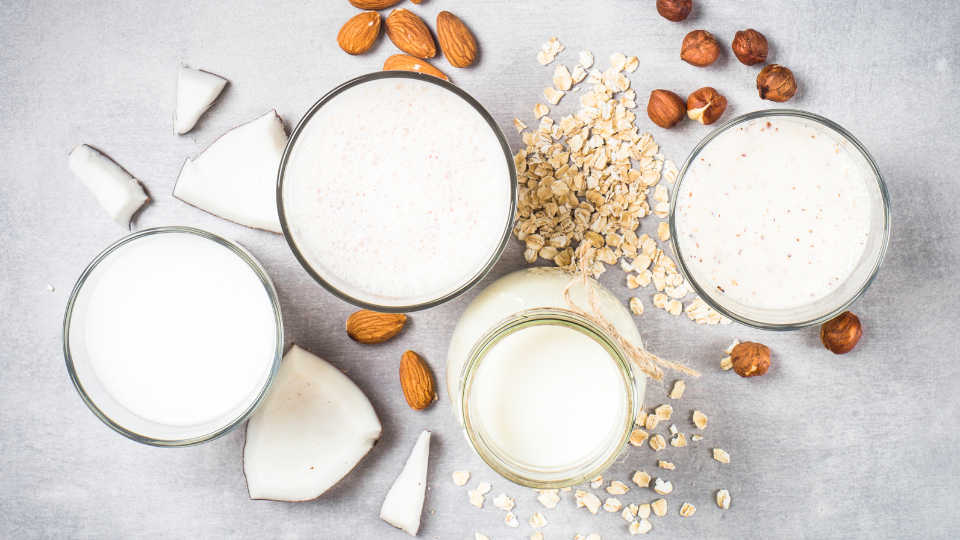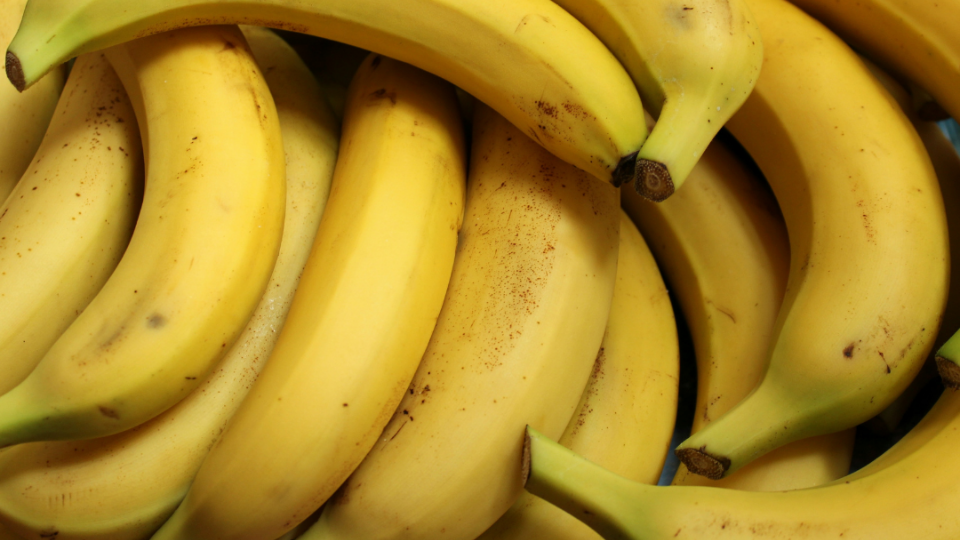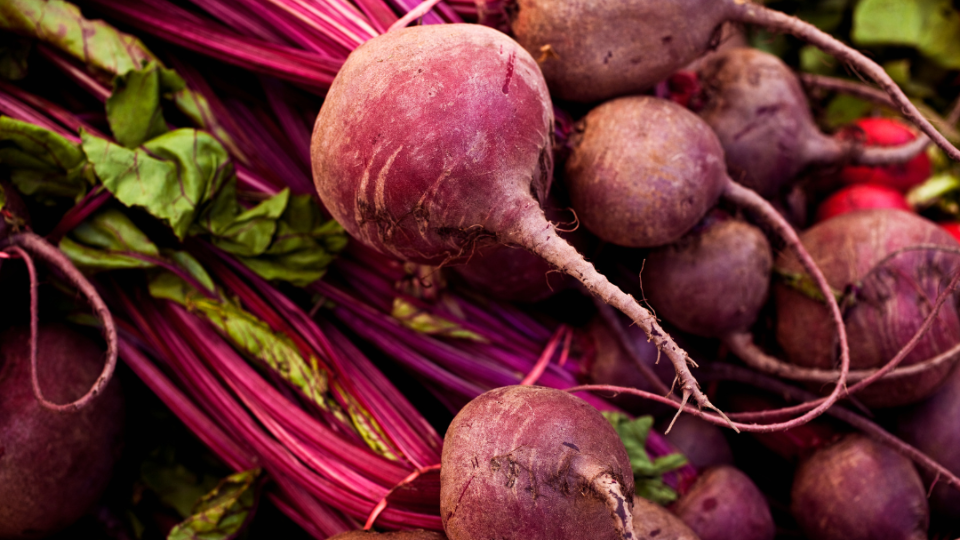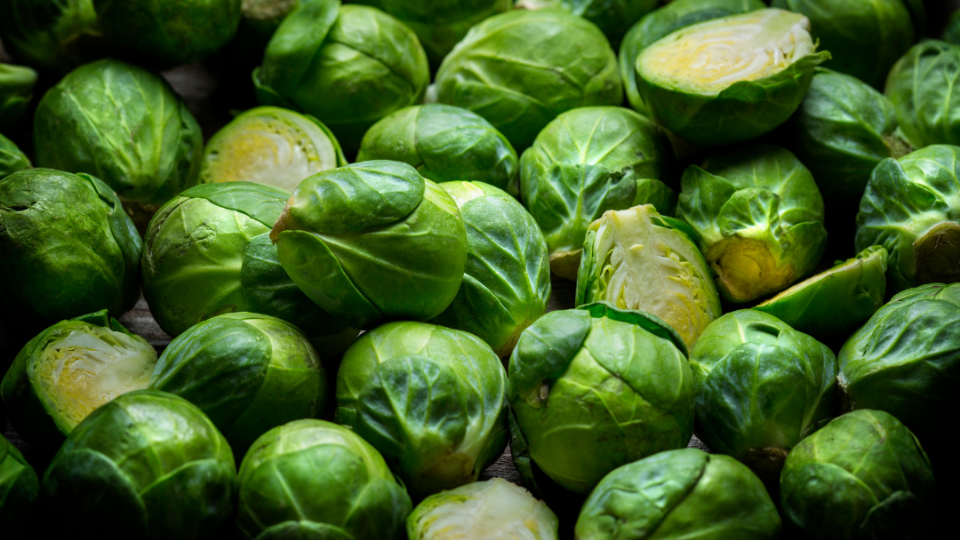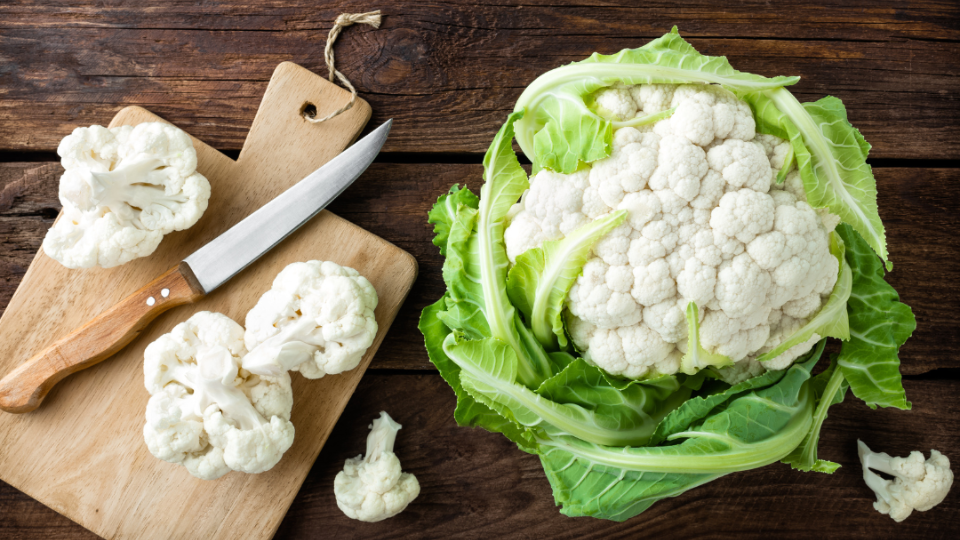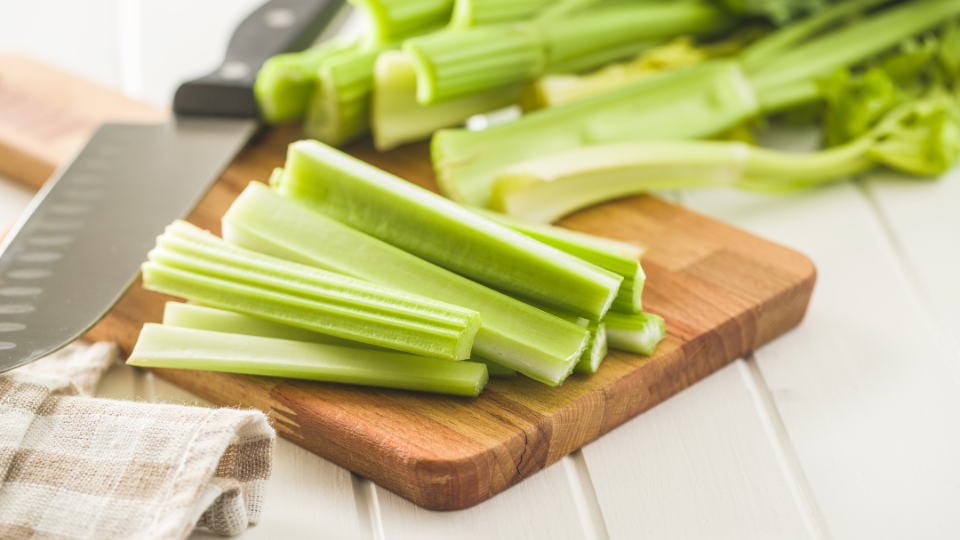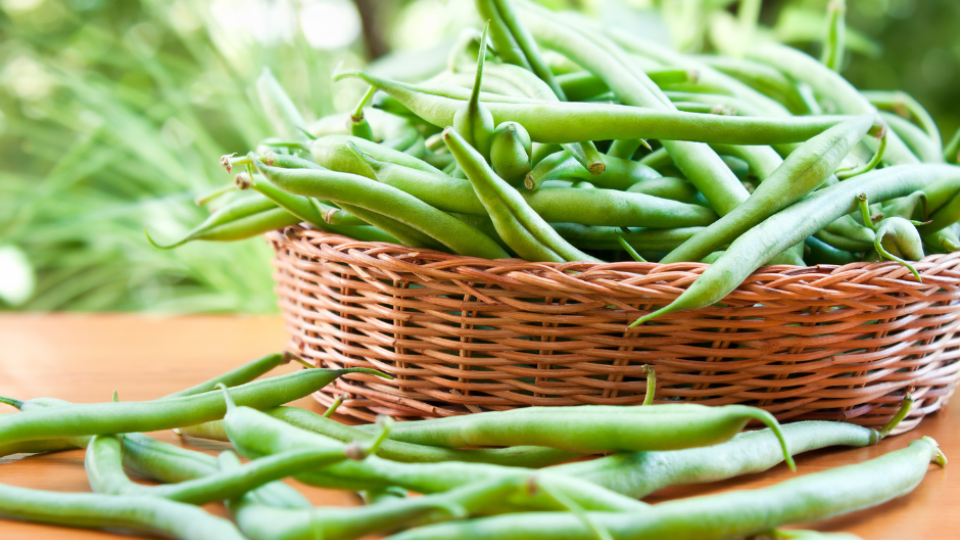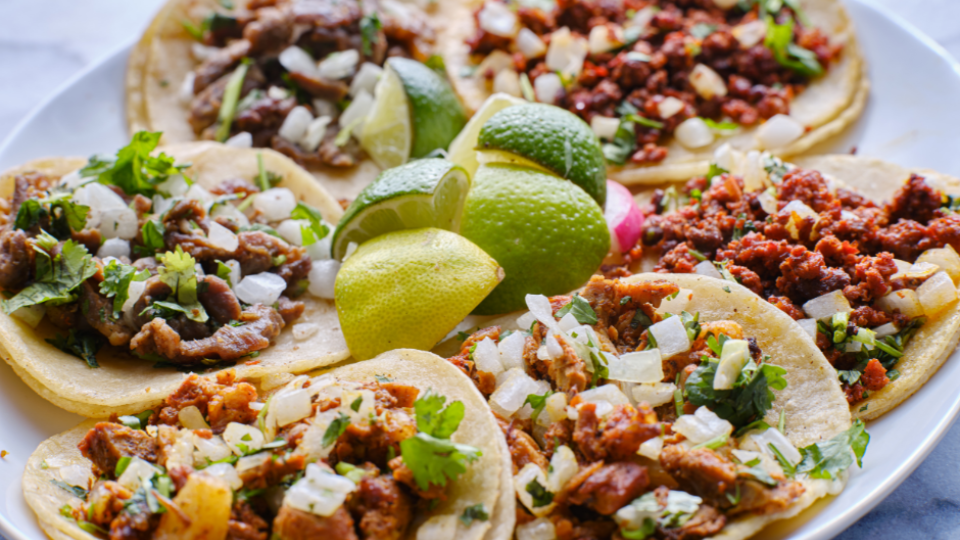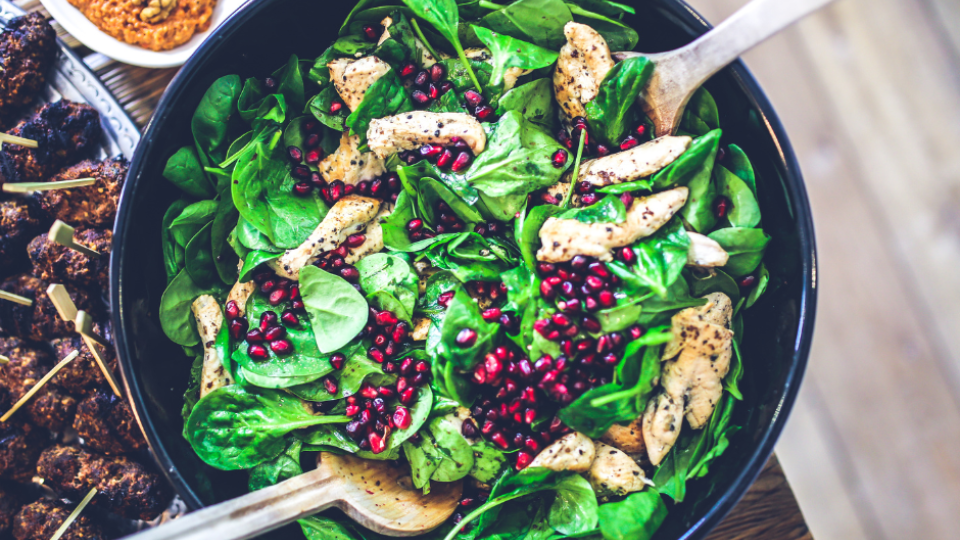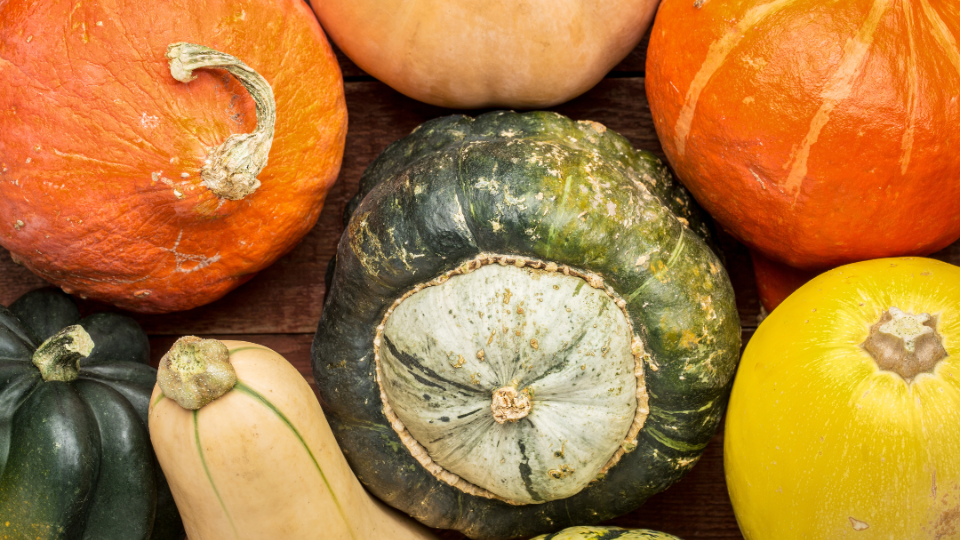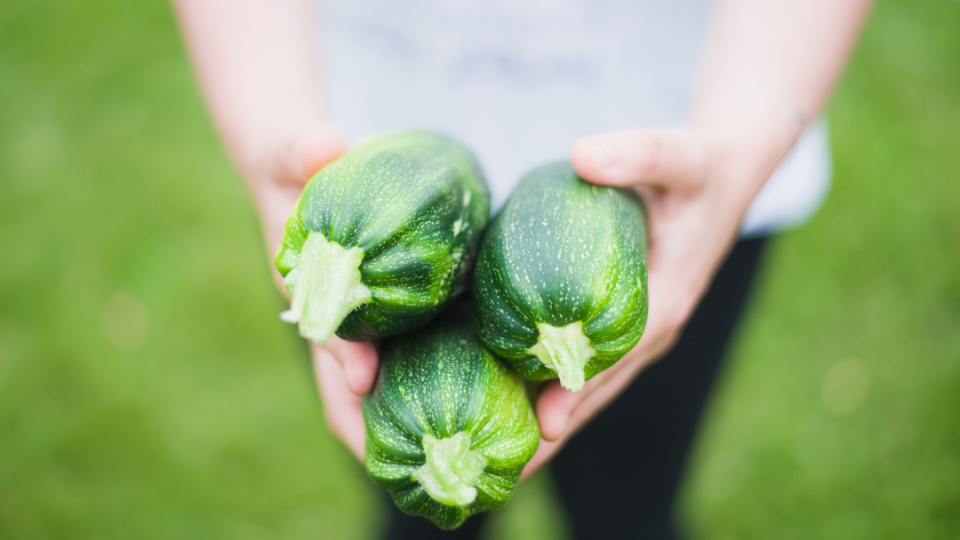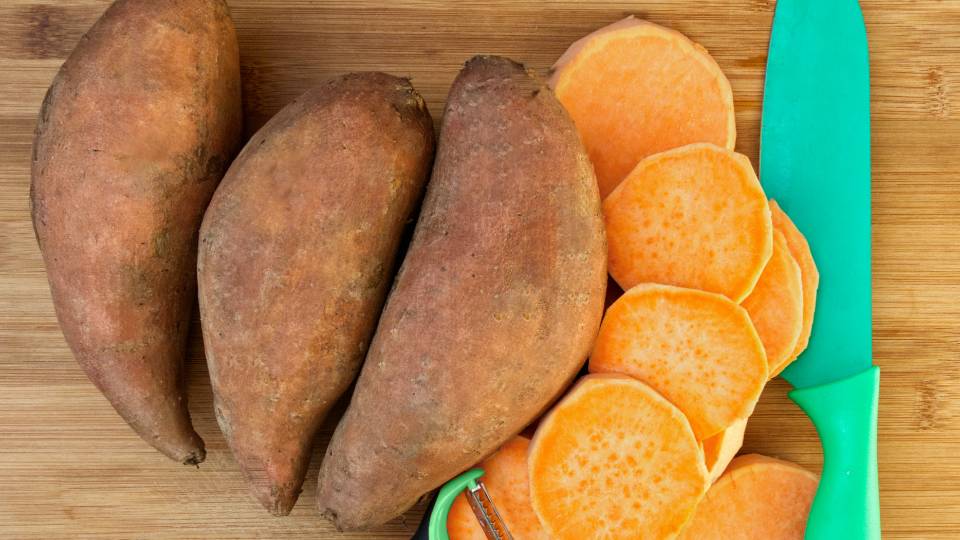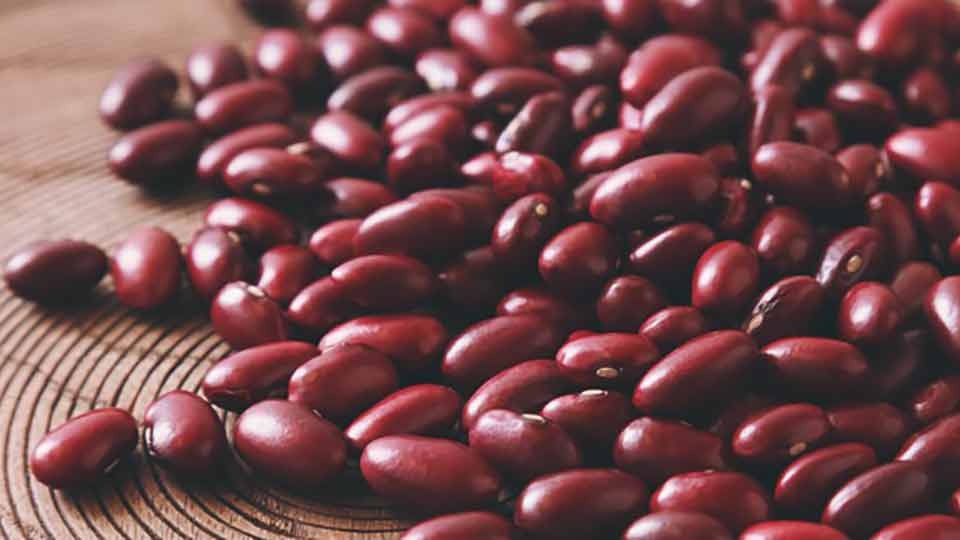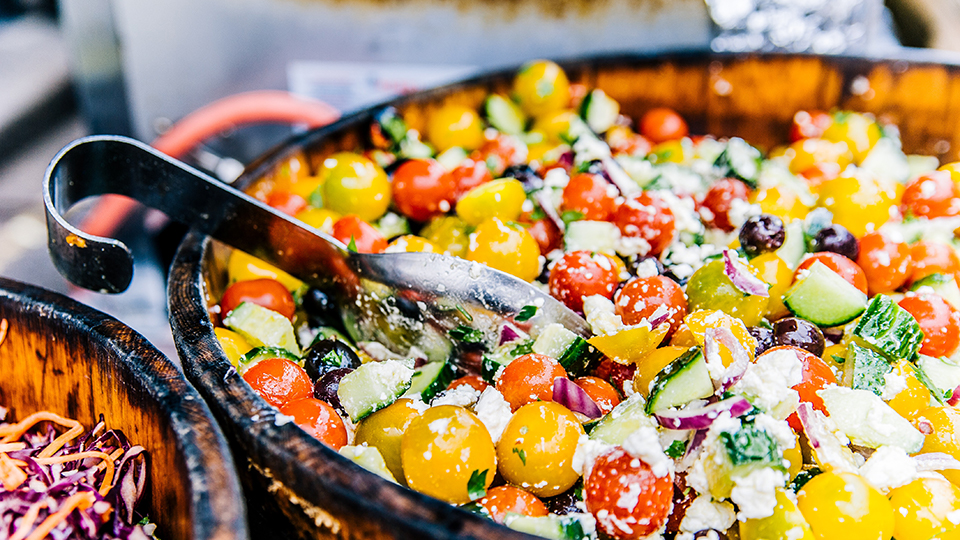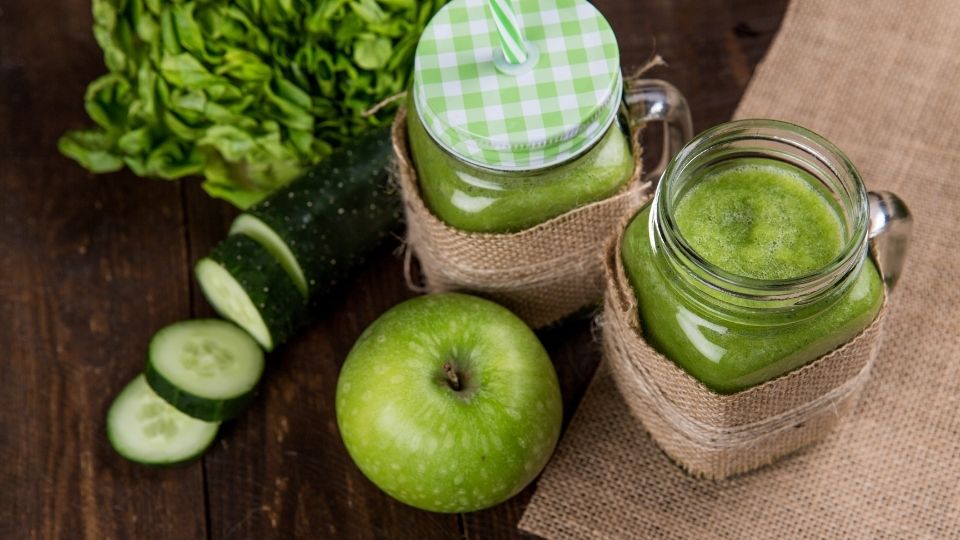Nutrition for Older Adults - Protein
 Protein is a vital nutrient that is part of a well-balanced diet. Forty-six percent of adults age 51 and older do not eat enough protein (Krok-Schoen, 2019). This is a problem because older adults are at an increased risk for developing health problems associated with not eating enough protein daily. Read on to learn more about how to reduce these risks and maintain a high quality of life!
Protein is a vital nutrient that is part of a well-balanced diet. Forty-six percent of adults age 51 and older do not eat enough protein (Krok-Schoen, 2019). This is a problem because older adults are at an increased risk for developing health problems associated with not eating enough protein daily. Read on to learn more about how to reduce these risks and maintain a high quality of life!
Why is Protein Important?
There are over 10,000 different types of protein found in our body in organs and tissues such as hair, muscle, bone and skin, and blood (Wu, 2016). Proteins help carry out chemical reactions throughout our body, build muscles and bones, are the building blocks of vitamins and minerals, and provide energy. Because there are so many different functions of protein, it is a critical nutrient for people of all ages. As we age, body composition naturally changes, which includes losing protein from muscles, bones, and other areas of our bodies. This is most evident in the reduction of skeletal muscles, the muscles that connect to the skeleton to move limbs and other parts of the body. This loss of protein contributes to impaired wound healing, loss of skin elasticity, and reduced ability to fight infection (Chernoff, 2004).
According to the National Institute of Health, most people reach peak bone mass between the ages of 20 to 30. After this point, it is essential to maintain and slow the decline of bone mass. Women all suffer unpreventable loss of bone mass during menopause because estrogen production decreases. This is why it is especially important for all older adults, and especially females, to maintain lean body mass (muscles) and strong bones. Doing so can slow the aging process by reducing the effects of diseases such as sarcopenia, the generalized loss of muscle mass and strength, and osteopenia or osteoporosis, the loss of bone mass and strength (Baum, 2016; Chernoff, 2004; Webb, 2016; Wolfe, 2012).
Maintaining lean body mass and strength will help older adults maintain an independent lifestyle (Baum, 2016; Chernoff, 2004; Webb, 2016; Wolfe, 2012). For example, keeping strong bones and muscles can lower the risk of falling and breaking bones. Eating enough protein as part of a well-balanced diet and continuing to do weight-bearing activities like walking will help older adults maintain muscle and bone strength, function, and mass to maintain a high-quality, independent life.
How Much Protein Should I Eat?
Each person has slightly different protein needs depending on age, sex, weight, and level of physical activity. MyPlate has created general recommendations by age. For ages 60+, they recommend that women consume 5-6 ounce-equivalents (oz-equiv) and men consume 6-7 oz-equiv. This amount of protein will make up 10-35% of your daily calories. To learn more about what your specific individual needs are, visit https://www.myplate.gov/myplate-plan. As we age, our bodies become less responsive to protein, meaning we don’t process and use protein as efficiently (Chernoff, 2004). An increase in daily protein intake can compensate for the inability to effectively absorb and use this nutrient (Webb, 2015). The following table lists specific amounts of food that count as 1 oz-equiv in the Protein Foods Group towards your daily recommended intake:
Amounts that counts as 1 oz-equiv in the Protein Foods Group |
Common portions and oz-equiv |
|
| Meats | 1 ounce cooked lean beef 1 ounce cooked lean pork or ham | 1 small steak (eye of round, filet) = 3½ to 4 oz-equiv |
| Poultry | 1 ounce cooked chicken or turkey, without skin 1 sandwich slice of turkey (4½” x 2½” x ⅛”) | 1 small chicken breast half = 3 oz-equiv ½ Cornish game hen = 4 oz-equiv |
| Seafood | 1 ounce cooked fish or shellfish | 1 can of tuna, drained = 3 to 4 oz-equiv 1 salmon steak = 4 to 6 oz-equiv 1 small trout = 3 oz-equiv |
| Egg | 1 egg | 3 egg whites = 2 oz-equiv 3 egg yolks = 1 oz-equiv |
| Nuts and seeds | ½ ounce of nuts (12 almonds, 24 pistachios, 7 walnut halves) ½ ounce of seeds (pumpkin, sunflower, or squash seeds, hulled, roasted) 1 Tablespoon of peanut butter or almond butter | 1 ounce of nuts or seeds = 2 oz-equiv |
|
Beans, peas, and lentils |
¼ cup of cooked beans, peas or lentils (such as black beans, kidney beans, white beans, chickpeas, cowpeas, or split peas) ¼ cup of baked beans, refried beans ¼ cup (about 2 ounces) of tofu 1 ox. Tempeh, cooked ¼ cup roasted soybeans 1 falafel patty (2¼”, 4 oz) 2 Tablespoons hummus | 1 cup split pea soup = 1 oz-equiv 1 cup lentil soup = 2 oz-equiv 1 cup bean soup = ¾ oz-equiv 1 soy or bean burger patty = 2 oz-equiv |
What Types of Protein Should I Eat?

Protein-rich foods contain other nutrients such as vitamins, minerals, carbohydrates, fats, fiber and cholesterol. Protein can be either animal-based or plant-based. Animal-based proteins include beef, pork, lamb, poultry, eggs, fish, and dairy products like milk, cheese, and yogurt. In addition to providing all nine essential amino acids that our body cannot produce, these foods can also be high in iron, another important nutrient (Wu, 2016). Dairy products provide calcium and vitamin D, which help maintain strong bones and teeth (Tunick & Van Hekken, 2014). Fish can provide omega-3 fatty acids, which are important for heart health (Shahidi & Ambigaipalan, 2018).
Protein from plant sources also offers our bodies many important nutrients (Wu, 2016). Good sources of plant-based protein include beans, peas, nuts, seeds, and soy products like tofu or tempeh. Beans, peas, and lentils are a great source of fiber which helps you feel fuller longer and keeps you regular. Nuts and seeds provide healthy fats that can reduce the risk of heart disease. Soy products, like animal-based proteins, contain all nine of the essential amino acids, in addition to fiber and many other vitamins and minerals (Messina, 2016).
While protein-rich foods offer many nutrients that nourish our bodies, some sources of protein also contain nutrients we should limit the intake of, including saturated fat and sodium. Diets that are high in saturated fats can raise LDL, or bad, cholesterol levels. Protein foods that are high in saturated fats include fatty cuts of beef and pork, hot dogs, duck, sausage, and bacon. Saturated fat can also be found in a few plant sources such as palm oil and coconut oil. Many of these foods, like hot dogs, sausage, bacon, and other processed meats also contain high levels of sodium. High levels of saturated fat and sodium may increase the risk of chronic diseases such as heart disease (Sacks et al., 2017). Additionally, limiting the foods mentioned above will help to avoid consuming more calories than needed. To avoid higher levels of saturated fat and sodium, consider choosing leaner meats, poultry, fish, nuts, seeds, and beans. A few examples of leaner animal-based proteins include chicken without the skin, pork tenderloin, lean ground beef, lean ground turkey, tuna and salmon
Protein - Part of Healthy, Balanced Diet!
Protein is an essential component of a balanced diet. It provides numerous vitamins and minerals to help energize the body. Including a source of protein in each meal or snack can help you easily meet your protein needs daily, while also helping you feel full longer, reducing the likelihood of consuming too many calories (Dhillon et al., 2016). Check out the table below for some protein-rich snack and meal ideas!
For older adults, maintaining the recommended amount of protein is especially important in improving health outcomes including the ability to perform activities of daily living (Wolfe, 2012). It also will aid in reducing the risk of chronic diseases (Baum, 2016; Chernoff, 2004; Webb, 2016; Wolfe, 2012). Varying protein sources, including both animal and plant-based options, will increase the amount of other nutrients consumed. The USDA recommends choosing lean meats, low-fat dairy options, and incorporating plant-based protein sources such as beans, nuts and seeds. Following these recommendations will increase longevity and quality of life. For more information about healthy diets, visit www.choosemyplate.gov.
Protein-Rich Snacks and Meals
Here are some ideas for protein rich snacks:
● Apples or banana with peanut or almond butter
● Whole grain crackers with cheese
● Low-fat cottage cheese with fruit or salsa
● Homemade trail mix with nuts, seeds, and dried fruit
● Smoothie made with low-fat yogurt, nut butter, and fruit
Here are some ideas for protein-rich meals:
● Curried Chicken Salad Sandwich
References
- Baum, J., Kim, I.-Y., & Wolfe, R. (2016). Protein Consumption and the Elderly: What Is the Optimal Level of Intake? Nutrients, 8(6), 359. https://doi.org/10.3390/nu8060359
- Chernoff, R. (2004). Protein and Older Adults. Journal of the American College of Nutrition, 23(sup6). https://doi.org/10.1080/07315724.2004.10719434
- Dhillon, J., Craig, B. A., Leidy, H. J., Amankwaah, A. F., Osei-Boadi Anguah, K., Jacobs, A., Jones, B. L., Jones, J. B., Keeler, C. L., Keller, C. E. M., McCrory, M. A., Rivera, R. L., Slebodnik, M., Mattes, R. D., & Tucker, R. M. (2016). The Effects of Increased Protein Intake on Fullness: A Meta-Analysis and Its Limitations. Journal of the Academy of Nutrition and Dietetics, 116(6), 968–983. https://doi.org/10.1016/j.jand.2016.01.003
- Krok-Schoen, J. L., Archdeacon Price, A., Luo, M., Kelly, O. J., & Taylor, C. A. (2019). Low Dietary Protein Intakes and Associated Dietary Patterns and Functional Limitations in an Aging Population: A NHANES Analysis. The Journal of Nutrition, Health & Aging, 23(4), 338–347. https://doi.org/10.1007/s12603-019-1174-1
- Messina, M. (2016). Soy and Health Update: Evaluation of the Clinical and Epidemiologic Literature. Nutrients, 8(12), 754. https://doi.org/10.3390/nu8120754
- Paddon-Jones, D., Short, K. R., Campbell, W. W., Volpi, E., & Wolfe, R. R. (2008). Role of dietary protein in the sarcopenia of aging. The American Journal of Clinical Nutrition, 87(5). https://doi.org/10.1093/ajcn/87.5.1562s
- Sacks, F. M., Lichtenstein, A. H., Wu, J. H. Y., Appel, L. J., Creager, M. A., Kris-Etherton, P. M., Miller, M., Rimm, E. B., Rudel, L. L., Robinson, J. G., Stone, N. J., & Van Horn, L. V. (2017). Dietary Fats and Cardiovascular Disease: A Presidential Advisory From the American Heart Association. Circulation, 136(3). https://doi.org/10.1161/cir.0000000000000510
- Shahidi, F., & Ambigaipalan, P. (2018). Omega-3 Polyunsaturated Fatty Acids and Their Health Benefits. Annual Review of Food Science and Technology, 9(1), 345–381. https://doi.org/10.1146/annurev-food-111317-095850
- Tunick, M. H., & Van Hekken, D. L. (2014). Dairy Products and Health: Recent Insights. Journal of Agricultural and Food Chemistry, 63(43), 9381–9388. https://doi.org/10.1021/jf5042454
- U.S. Department of Health and Human Services. (n.d.). Osteoporosis: Peak Bone Mass in Women. National Institutes of Health. https://www.bones.nih.gov/health-info/bone/osteoporosis/bone-mass. What's on your plate? MyPlate. (n.d.). https://www.myplate.gov/.
- Wolfe, R. R. (2012). The role of dietary protein in optimizing muscle mass, function and health outcomes in older individuals. British Journal of Nutrition, 108(S2). https://doi.org/10.1017/s0007114512002590
- Wu, G. (2016). Dietary protein intake and human health. Food & Function, 7(3), 1251–1265. https://doi.org/10.1039/c5fo01530h
Authors
Amria Farnsworth, and Casey Coombs, MS, RD
Related Nutrition Articles




